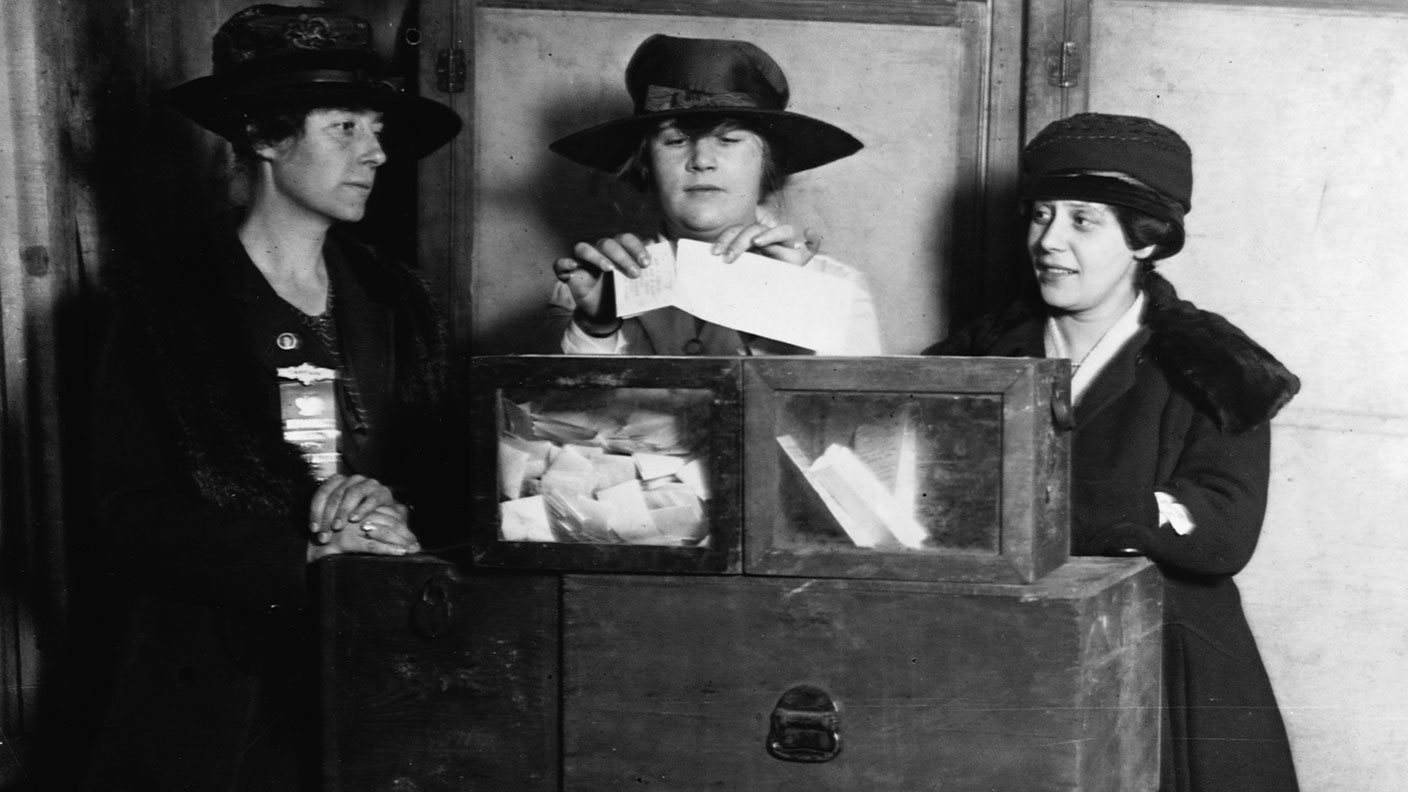
It may surprise you to learn (given the whole “no taxation without representation” thing) that the USA did not introduce universal suffrage when it threw off the yoke of an unjust monarchical system and declared itself a republic.
Despite the egalitarian pronouncements of the US declaration of independence, it would take another 150 years or so before all adults were allowed to vote. Indeed, it would be nearly a 100 years before anyone but white, property-owning men were allowed to vote.
Unfortunately, when the US Constitution was drafted, it did not define who was allowed to vote. That was left up to the individual states. And most states imposed restrictions.
MoneyWeek
Subscribe to MoneyWeek today and get your first six magazine issues absolutely FREE

Sign up to Money Morning
Don't miss the latest investment and personal finances news, market analysis, plus money-saving tips with our free twice-daily newsletter
Don't miss the latest investment and personal finances news, market analysis, plus money-saving tips with our free twice-daily newsletter
In 1869, the 15th Amendment prohibited states from denying the vote to citizens based on their "race, colour, or previous condition of servitude". But many states slyly got round these restrictions by imposing literacy tests and other more nefarious hurdles.
Wyoming was the first state to give women the vote in 1869. But still, most women were disenfranchised.
The National Women Suffrage Association was formed that year by Susan B Anthony and Elizabeth Cady Stanton. In 1878, Anthony and Stanton drafted an amendment to the Constitution that would give women the vote. But it was rejected in the Senate.
A second submission was rejected in 1914. Two more submissions, in 1918 and 1919, also failed. But a further submission in 1919 passed, and it was submitted to the states for ratification.
The last state to ratify was Tennessee. On 18 August 1920, 50 of the 99 members of the state's House of Representatives voted in favour, and women were finally allowed to vote.
In the UK, meanwhile, property-owning women over the age of 30 were given the vote in 1918 (along with, effectively, working-class men over the age of 21). But it would not be until 1928 that all women were given the vote in the UK on the same terms as men.
Get the latest financial news, insights and expert analysis from our award-winning MoneyWeek team, to help you understand what really matters when it comes to your finances.
Ben studied modern languages at London University's Queen Mary College. After dabbling unhappily in local government finance for a while, he went to work for The Scotsman newspaper in Edinburgh. The launch of the paper's website, scotsman.com, in the early years of the dotcom craze, saw Ben move online to manage the Business and Motors channels before becoming deputy editor with responsibility for all aspects of online production for The Scotsman, Scotland on Sunday and the Edinburgh Evening News websites, along with the papers' Edinburgh Festivals website.
Ben joined MoneyWeek as website editor in 2008, just as the Great Financial Crisis was brewing. He has written extensively for the website and magazine, with a particular emphasis on alternative finance and fintech, including blockchain and bitcoin.
As an early adopter of bitcoin, Ben bought when the price was under $200, but went on to spend it all on foolish fripperies.
-
 Why you fear money – and how to fix it: MoneyWeek Talks
Why you fear money – and how to fix it: MoneyWeek TalksPodcast MoneyWeek's digital editor, Kalpana Fitzpatrick, speaks to financial psychotherapist Vicky Reynal about how to change your money mindset for the better.
-
 How cancelling unused direct debits could boost your pension by £37,000
How cancelling unused direct debits could boost your pension by £37,000A new year refresh of your spending could save you money and help boost your pension pot.

